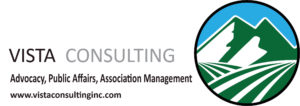 The Kaweah Delta Water Conservation District held its board of directors meeting on Tuesday, August 4, 2020 remotely from its Farmersville headquarters. Holding meetings remotely works pretty well. This was a GoToMeeting and General Manager Mark Larsen had to open the portal for the staff and board members. He and Chairman Don Mills were at the KDWCD boardroom because I could see them.
The Kaweah Delta Water Conservation District held its board of directors meeting on Tuesday, August 4, 2020 remotely from its Farmersville headquarters. Holding meetings remotely works pretty well. This was a GoToMeeting and General Manager Mark Larsen had to open the portal for the staff and board members. He and Chairman Don Mills were at the KDWCD boardroom because I could see them.
Mills opened the meeting at 9:00am and there were no public comments. Larsen announced Water Master Vick Hernandez has been with the district 20-years. Congratulations and good for him. Larsen said Director Brian Watte said the City of Tulare wants to move its homeless population to the Elk Bayou Park south of town on Highway 99. Larsen said at this point it is an unlikely proposition to go toe to toe with the city at this time. However, the channel is a waterway maintained by Kaweah Delta. Watte said the City Council has mixed opinions but there are some who think it’s a great idea. He also said it could be necessary to hold the city liable for the homeless using the channel as a latrine or burrowing into the banks. The Regional Water Quality Control Board will most likely step in at some point. Anyway, that’s a strategy the district will look into.
Hernandez gave his report saying there is 21,000 a/f still in storage on the Kaweah River. The power plant ran an extra 15 days or so longer than expected. He said starting Monday several of the entities running will shut down deliveries but there is only 5,000 a/f still at play amongst them. Hernandez doesn’t expect the pool to drop more than 12,000 a/f this year.
Larsen said the Friant Division CVP allocation is still 65 percent. It sounded like engineer Dennis Keller said the KDWCD system can be de-watered by the end of this month. He said summer storms are not developing as expected. That’s good for lightening strike fires but the US Bureau of Reclamation may have to refigure its estimates or borrow 150,000 a/f of water from next year’s Class I supply. He said Cal Trans is looking to repair a bridge in Tulare County crossing the Friant Kern Canal. Keller explained the Bureau can borrow 100,000 a/f from next year without question as a management policy decision. Above that and the contractors get to weight in their opinion.
Larsen reported on the Friant Water Authority saying the O&M agreement with the Bureau was OK’d and FWA will perform the O&M. The water quality agreement for the FKC was passed with Shafter Wasco ID being a dissenting voice. Director Chris Tantau is also the Chair of FWA. He reported funding for the FKC repairs is moving forward but the need to wrap it up in the next three or four months or there could be delays. There is a Friant board retreat coming up in November, I think, and Tantau said that would be a good opportunity for Kaweah directors to come up to speed on all things Friant.
Keller reported on the Hannah Ranch Project, a recharge facility amongst other matters. He said there needs to be an expansion of a bridge in the midst of the property to allow room for pedestrians. Two pipelines could also be installed while the bridge is shut down to widen it. He said the clay content on one excavation site was lower than expected but he thinks there is more clay material elsewhere in the project that will keep costs down. He said the  Army Corps of Engineers still has some permitting that needs to be completed. Keller also said the low flow crossing to allow work at McKay Point will be completed. He said the feed ditch was lined with clay and has been holding water well. Keller said there some closed session issues dealing with the project.
Army Corps of Engineers still has some permitting that needs to be completed. Keller also said the low flow crossing to allow work at McKay Point will be completed. He said the feed ditch was lined with clay and has been holding water well. Keller said there some closed session issues dealing with the project.
Someone tried to speak, I believe it was Director Jimi Valov, but we couldn’t understand him. Moving on Larsen reported on the Terminus Power Project and said the sale of the plant is moving along well. There shouldn’t be any delays for a September 1st closing date. With the water supply diminishing the O&M portion starts and who will be responsible is up for grabs. The Cal ISO market was a step learning curve. Larsen said after being hit in the head by a 2×4 a couple of times the light is beginning to shine on how to best negotiate sales and procedures. Sorry to be vague about this but there was a good deal of contract talk I don’t quite know how to convey. It involved what type of insurance for Kaweah Delta employees doing work for the new power company and how it overlaps with ACWA JPIA.
With the water supply diminishing the O&M portion starts and who will be responsible is up for grabs. The Cal ISO market was a step learning curve. Larsen said after being hit in the head by a 2×4 a couple of times the light is beginning to shine on how to best negotiate sales and procedures. Sorry to be vague about this but there was a good deal of contract talk I don’t quite know how to convey. It involved what type of insurance for Kaweah Delta employees doing work for the new power company and how it overlaps with ACWA JPIA.
The Greater Kaweah Delta GSA report was next and General Manager Eric Osterling said there will be a board meeting next Monday. Now that the engineering reports are coming in the GSA is expected to partner with the Kings River Conservation District for outreach help. Larsen said he was contacted by the East Kaweah GSA for some input on a stakeholder committee for this reason. There is a contract with engineering firm Provost & Pritchard to do well video surveys. The meter contract was with Fresno State University and unfortunately the main point of contact for so many projects and entities, Tommy Esqueda, has moved on due to budget cuts from the Big Marxist Virus.*
Osterling said the work with Stanford University on subsidence monitoring is working out very well. This is the helicopter towed array magnetic survey. He said there is a good deal of confidence with this data and Stanford has been working closely with local managers and stakeholder so the boots on the ground questions will be considered. There is now outreach efforts to surrounding GSAs and Sub Basins such as the El Rico GSA. Corcoran ID has mentioned turning over some of its wells within the GKGSA for monitoring wells. There was some concern in obtaining data from GEI engineering’s modeling.
The next meeting coincides with the opening of dove season, September 1st. There didn’t seem to be any conflicts with the directors so that date remains. The meeting then went into closed session and that was that.
DISCLAIMER OF RESPONSIBILITY; Waterwrights.net strives to provide his clients with the most complete, up-to-date, and accurate information available. Nevertheless, Waterwrights.net does not serve as a guarantor of the accuracy or completeness of the information provided, and specifically disclaims any and all responsibility for information that is not accurate, up-to-date, or complete. Waterwrights.net’s clients therefore rely on the accuracy, completeness and timeliness of information from Waterwrights.net entirely at their own risk. The opinions expressed in this report are those of the author and do not represent any advertisers or third parties.
*What to call a virus? As it turns out coronavirus is inaccurate. That name was already taken as a zoonotic disease for animals. Zoonotic diseases can pass from animals to humans and from humans to animals. COVID-19 stands for CO=corona, VI=virus, D=disease and 19 indicates which year it broke out=2019. While popular I feel an ineffable concern it’s too much of a pass to political correctness. It is a virus that originated from the country of China which is ruled by communists. So I’ve been referring to it as Chinese Commie Virus. In this time when everyone’s sensibilities are as tender as a nudist’s first sunburn of the year I’ve been receiving comments that this CCV could be disparaging to Asian Americans. (I’ve also received comments about not being in lockstep with climate change but that’s a whole different game of 52-card pickup.) Let’s be clear – I love all Americans: Asian, European, African, South American, Australian and for most of us North American Americans. In fact the Native American portion of my lineage places me in a sanguine relationship to Asians according to the theory of the Bering Land Bridge. So, even though we are referring to a virus; Even though that virus originated in China; Even though China is communist – I will refrain from referring to COVID-19 based on the afore mentioned linear progression – as the Chinese Commie Virus. But what to call it besides COVID-19?
Oriental Totalitarian Boogers comes to mind. After all we’ve been told for decades Oriental isn’t the proper word for describing people from the orient. “Rugs are oriental, not people,” has been sprung on me a few times. However, I can see a path of reason still holds to the idea that oriental could be a reference to a human; although no more so than occidental, boreal or austral. Boogers is a term I often use in place of an expletive, meaning detritus from the boogie man but it also has a cruder connotation so it’s out. Virus, I do believe is still an acceptably accurate noun – but who knows if some folks self-identify as virus? That would be a stretch because science doesn’t consider viruses as living but I used to think enough people agreed there were absolutes like truth and gender.
I believe the best course for me to be true to my instincts as wells as considerate of others is just Big Marxist Virus. The largest country on earth, the political doctrine followed and the type of disease without offending anyone who isn’t a totalitarian. If you’re one of those unhappy souls who don’t believe anyone should think different than them then you’re most likely insane or a totalitarian. In which case you may not be capable of not being offended and there’s nothing I can do for you for as long as we live in a free society.
ALL RIGHTS RESERVED. Copyright 2020 by Don A. Wright
Kaweah Delta Water Conservation District
2975 N. Farmersville Blvd.
Farmersville, California 93223
559/747-5601
Board of Directors
Don Mills – President, Chris Tantau – Vice-President, Ron Clark, Jimi Valov, Jeff Ritchie, Mike Shannon & Brian Watte
Management
Mark Larsen, General Manager – mlarsen@kdwcd.com
Terry Stafford, Facilities Manager -tstafford@kdwcd.com
Dian Rader, Administrative/HR Coordinator – drader@kdwcd.com
Larry Dotson, Senior Engineer – ldotson@kdwcd.com
Shane Smith, Projects/Administrative Manager – ssmith@kdwcd.com
Office and Field Staff
Chemical Applicator/Equipment Operator – Jim Mudford
Equipment Operators – Jesus Sandoval, Chris Bell & Tommy Crosswy
Equipment Operator/Mechanic – Ryon Van Essen
Hydrographer/River Operator – Jose Rivas & Rick Avila
Water Master – Victor Hernandez
Senior Equipment Operator – Tom Dilbeck & Doyle Pettyjohn
Accountant – Shelly Heier
Administrative Assistant – Kim Hollis
Board Coordinator – Anita Wilson
Office Assistant – Kathleen Halvorsen
Engineering Technician – Matthew Jacobus
Primary Consultants
Bruce George – Special Projects Consultant
Dennis Keller – Civil Engineer (Keller/Wegley Consulting Engineers)
Aubrey Mauritson – Attorney (Ruddell, Cochran, Stanton, Smith & Bixler, LLP)
Richard “Dick” Moss – Civil Engineer (Provost & Pritchard Consulting Group)
Shelley Orth – Editor/Wordsmith
From the Kaweah Delta website:
The Kaweah Delta Water Conservation District (KDWCD) was formed in 1927, under the provisions of California state law known as the Water Conservation Act of 1927, for the purpose of conserving and storing waters of the Kaweah River and for conserving and protecting the underground waters of the Kaweah Delta. Later the Water Conservation Act, as well as the purpose of the District, was expanded to include power generation and distribution.
The District is located in the south-central portion of the San Joaquin Valley and lies in portions of both Tulare and Kings Counties. The total area of the District is about 340,000 acres with approximately 255,000 acres located in the western portion of Tulare County and the balance, or 85,000 acres, in the northeastern portion of the Kings County.
The Districts lands are primarily agricultural in nature, although the cities of Visalia and Tulare constitute significant areas of urbanization. Farmersville is the other incorporated area. The population of the District is currently estimated to be in excess of 175,000 people with the principle crops being cotton, misc. field crops, deciduous fruit and nut trees as well as alfalfa.
Numerous public and private entities within the District’s boundaries divert water from the Kaweah River and its distributaries. Nearly all of the lands served with Kaweah River water also are served irrigation water from groundwater, primarily due to the erratic and relatively undependable nature of flow on the Kaweah River. All municipal and industrial water uses within the District are supplied from groundwater.
KDWCD and Tulare Irrigation District (TID), which lies entirely within the boundaries of the Kaweah Delta Water Conservation District, has a long-term contract with the federal Central Valley Project (CVP) for water from the Friant Division of the CVP. TID has historically received substantial quantities of CVP water surplus to the demands of the District which augment the Kaweah River supply.
The District and the Kaweah River groundwater basin have experienced long-term groundwater overdraft estimated in 2007 to be as much as 40,000 acre-feet per year. The District has performed multiple studies of groundwater data to determine the extent and volume of groundwater overdraft within its boundaries. There are currently over 40 recharge basins within the District covering approximately 5,000 acres. While KDWCD owns and operates many of these groundwater recharge basins, it does not provide water banking services for others.






























